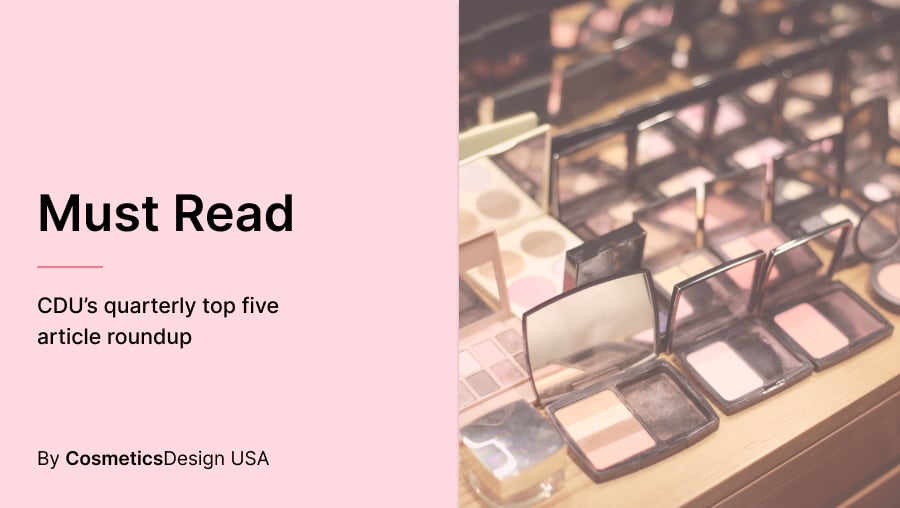#5: Tariffs and tight budgets: The new reality for beauty e-commerce
In April of this year, the Trump Administration implemented new tariffs aimed at addressing significant trade imbalances. These measures include a baseline 10% tariff on all imports, with higher rates for specific countries based on their trade surpluses with the United States.
The objective is to promote fair trade practices and bolster domestic industries.
Concurrently, consumer sentiment has declined, largely due to recent stock market volatility and economic uncertainties. This environment has notably impacted social commerce within the beauty and personal care sectors, leading to shifts in consumer purchasing behaviors.
In this CosmeticsDesign Q&A, we spoke with Madhav Pitaliya, Senior Research Executive at Coresight Research, to explore how these economic pressures are reshaping the role of social commerce in the beauty and personal care industries.
#4: EWG’s 19th annual Guide to Sunscreens spurs industry pushback on safety claims
As summer approaches, the Environmental Working Group (EWG) has released its 19th annual Guide to Sunscreens, evaluating over 2,200 SPF products and identifying what it described as widespread shortcomings in sun protection efficacy and ingredient safety. According to EWG, “almost four in five, or about 80% of sunscreens still offer inadequate skin protection or contain potentially harmful ingredients, or both.”
The release has prompted strong responses from across the personal care and dermatology sectors, who cautioned against undermining public trust in sunscreen products that are tested and approved under existing regulatory frameworks.
“Sunscreen products—whether made with mineral or non-mineral UV filters—are essential, life-saving tools,” said Alexandra Kowcz, Chief Scientist and EVP of Science at the Personal Care Products Council (PCPC). “This report sows consumer confusion and poses a serious risk by undermining public trust in products that are scientifically proven, rigorously tested, and highly effective.”
#3: Inside beauty’s ingredient boom: Market trends shaping the industry
As the beauty industry continues to evolve in response to better meeting consumer needs, preferences are shifting toward science-backed ingredients, streamlined routines, and sustainable solutions. With skin care literacy on the rise, brands are adapting their strategies to meet the demand for transparency, efficacy, and multi-functional products.
From ingredient innovation to evolving pricing strategies, manufacturers are finding new ways to engage an increasingly informed audience.
We spoke to Melissa Munnerlyn, Co-Founder & CMO of Daash Intelligence, for her insights into the data behind the rising popularity of hyaluronic acid and other active ingredients in skin and body care products.
#2: Hair color litigation targets L’Oréal USA, Wella, Clairol and more for alleged failure to warn of cancer risk
A recently filed lawsuit in Los Angeles County Superior Court alleges that a range of widely used professional hair dye products contributed to the development of bladder cancer in a California-based cosmetologist after decades of occupational exposure.
CosmeticsDesign spoke to Andrew Parker Felix of Morgan & Morgan, co-counsel for the plaintiff, who underscored three core allegations: failure to warn, defective design, and deceit by concealment.
“The lawsuit alleges that the Defendant companies failed to warn customers of the possible risks and health hazards that their products caused,” said Felix. “The products were defectively designed and failed to be tested for hazards, but were entered into the stream of commerce anyway.”
We also spoke to industry attorney Katie Bond, Partner at Keller and Heckman, LLP, about her insights into the suit’s potential trajectory and impact. As Bond noted, “these types of cases, if they go to trial, normally come down to a ‘battle of the experts,’ with issues like how valid the science might be linking hair dyes to bladder cancer, and how closely that science might ‘match’ the named brands.”
#1: Beauty brands face tough choices as tariffs drive up costs
Current and impending tariffs are squeezing margins for U.S. cosmetics and personal care brands, but industry stakeholders have options to respond proactively, Kimber Maderazzo, Professor of Marketing at the Pepperdine Graziadio Business School, told CosmeticsDesign US.
Following the tumultuous situation surrounding international tariffs earlier this year, CPG industries across the US, including the cosmetics and personal care sectors, continue to monitor how they may be impacted closely.
Maderazzo shared her expert insights into the current effects of the Trump administration’s tariff war and how industry stakeholders can assume an anticipatory position in the weeks and months ahead.


